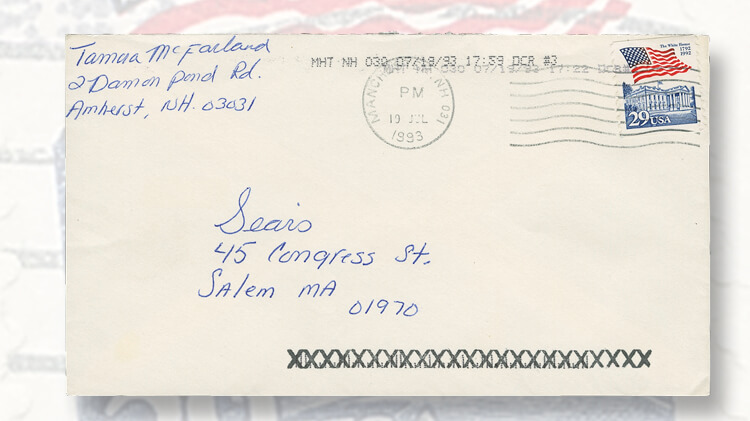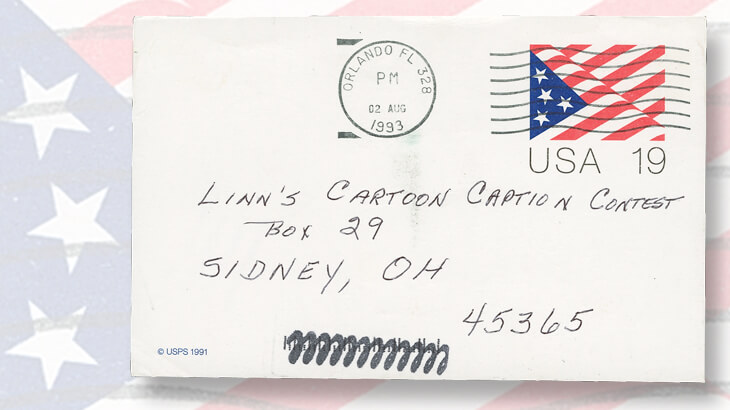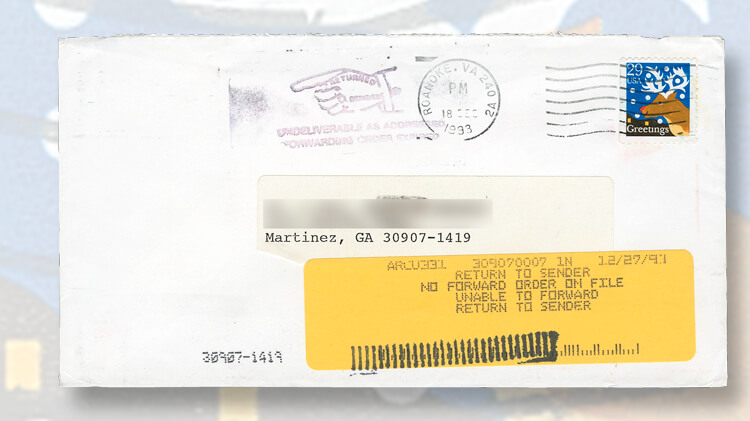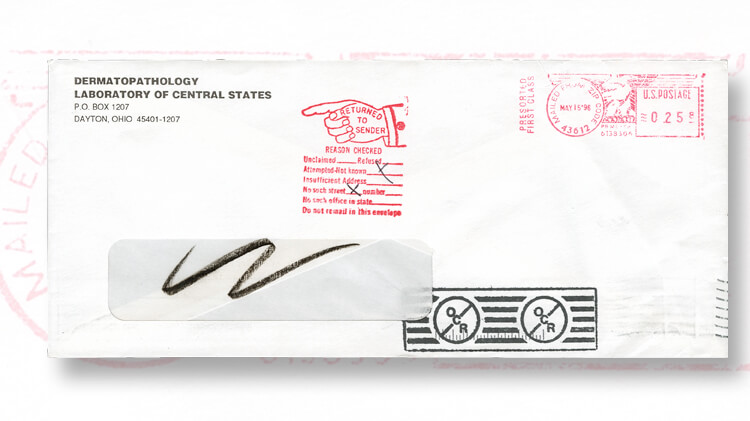US Stamps
Figuring out exactly when ‘bar code blockers’ were in use
By John M. Hotchner
Mistakes happen, and when they do, there must be some way to eliminate them or at least reduce their impact.
One pile of covers I’ve accumulated provides a good postal example of this rule.
Beginning in 1982, the United States Postal Service started to use optical character recognition (OCR) technology to read ZIP codes on envelopes.
Connect with Linn’s Stamp News:
Sign up for our newsletter
Like us on Facebook
Follow us on Twitter
This process also checked the ZIP code that was detected against computer directories, and then sprayed a 32-bar (five-digit ZIP), 37-bar (the last six digits of a ZIP+4) or 52-bar (full ZIP+4) code onto the lower part of the address side of the envelope, below the written address.
This was done at the rate of 10 envelopes per second. The benefit was that mail sorting could be done faster and with greater accuracy by automated equipment rather than by hand, thus speeding the mail at less cost.
The first generation OCR readers were installed in Chicago, then later in Denver and Dallas.
In 1988, widespread installation of multiline OCR readers began. They read not only the ZIP code but the entire address block. They then compared the information with the ZIP code provided by the letter writer and the ZIP directory in the computer, and printed an OCR ZIP+4 in most cases, whether the sender had provided the +4 or not.
But what happened in those instances where the Postal Service’s computer malfunctioned and printed an incorrect bar code? Or mail as addressed had the correct OCR ZIP code but could not be delivered?
Somehow the OCR-printed ZIP code had to be invalidated so the envelope would not be put back into the mailstream and directed again to the wrong or undeliverable address (known as “loop mail”) instead of being returned to the sender or sent for directory assistance.
Thus was born a class of marking called “bar code blockers” (BCBs): hand stamps used to obliterate the automated OCR ZIP code.
It would appear that each post office obtained its own version of the bar code blockers locally, because there are many varieties. I have or know of more than 50. Most are black, but some are in purple; and red is known. A selection is shown nearby.
The range of chronological use in my collection goes from August 4, 1988, to March, 10, 1999, with very few after 1996.
Over time, the bar code blockers were replaced by computer-printed yellow labels that included the ZIP code for return. An example of a cover with both the old and new systems is shown.
I would be interested in reports of examples with earlier or later dates. If you have one of these, please contact me, John Hotchner, at jmhstamp@verizon.net, or at Box 1125, Falls Church, VA 22041-0125.
Some time in the future, I plan to include an update in this column and will credit all who participate in establishing new start and end dates.
I am indebted to Wayne Youngblood and Douglas Quine, both of whom have written on this subject in the past and helped me understand the progress of mechanization in the USPS.
MORE RELATED ARTICLES
Headlines
-
US Stamps
Oct 7, 2024, 3 PMMcMurtrie dismissed as APS education director following Sept. 21 arrest
-
US Stamps
Oct 7, 2024, 12 PMVasiliauskas named president of Mystic Stamp Co.
-
US Stamps
Oct 6, 2024, 5 PMApgar souvenir card available
-
US Stamps
Oct 6, 2024, 4 PMFirst Continental Congress and U.N. stamps receive Scott catalog numbers












